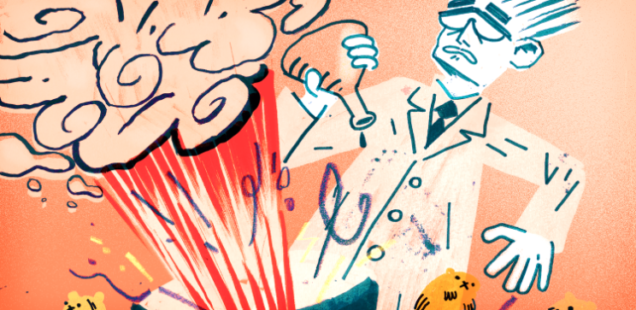
Running Business Experiments
I thought ‘Business’ Experiments were like Quantum Physics experiments.
-
Expensive
-
Time intensive
-
Theoretical
-
Waves just turn into particles if I try to observe them
But, I was mistaken. Now I know that the decision to not run experiments is the long, expensive decision.
Examples Of Simple Yet Useful Experiments
-
If I add performance bonuses, do freelancers get more results?
-
If I take on a loan, is my business bigger after the loan is paid back?
-
If I try this new marketing strategy, will my sales and profits increase?
-
If I sell this product, will I make as much money as I expect?
-
If I invest in the stock market, what return do I actually earn?
-
If I use my credit cards, how much does my credit score increase?
Whenever you take any action, it’s usually because you expect a certain result.
But results aren’t instantaneous so you forget what you did or forget to check the results. You won’t learn anything.
It’s like shooting a very slow arrow, aiming for the bull’s eye, and then walking away without looking where it lands.
If you track that arrow, you’ll learn how to improve. If you aimed too low, you can shoot the higher. A failure that allows you to make better decisions is worth it. Success becomes more valuable because you can repeat it.
Writing A Simple Experiment Can Take 30 Seconds
The simplest experiment involves writing down what you expect to happen due to some action you’re taking today, and checking your ‘hypothesis’ at a later date.
-
“I am buying $5,000 of product X. I expect it to earn $1,000/month profit within 3 months.”
Even this simple note (hardly an ‘experiment’) will be shockingly informative, allowing you to compare your expectations to reality. You will know if your expectations are overly conservative, overly optimistic, or actually, quite accurate.
Discovering that your hypothesis was accurate, or seeing a result better than expected, can be quite shocking!
A slightly more complex process (still simple) that I currently use, looks like this:

The only things I include are:
-
Start Date
-
Experiment Name
-
Background Information
-
“I am launching this product because it is similar to other profitable products, so I think it will be a success.”
-
Process
-
1. Found this product with 200% ROI
-
2. Paid for sample, which was good quality
-
3. Purchased $5,000 of inventory
-
4. Sell on Amazon.com by creating images, writing sales copy, and running advertising.
-
Control Group
-
“Other similar products are earning $1,000/month profit.
-
Hypothesis
-
“I expect it to earn $1,000/month profit.”
-
End Date
-
Result
-
“Yes! It made money” OR
-
“No! I couldn’t sell it.”
-
What will you DO next?
-
“I will buy more products like this!” Or
-
“Total failure. I should invest less to test new products.”
I used to think these steps weren’t necessary because I know all these things in my head. But, if I don’t crystalize this into a clear experiment then I will never get a clear result.
“Whenever I do anything, I’m expecting something.” – This was an eye opening discovery for me, even though it’s obvious. The implication is that every decision, every action can be an experiment.
Set Up 1 Experiment Today
What are you going to do after you read this article?
Why are you doing it? What result do you expect?
Simply, write down today’s date, what you’re about to do, and what you expect to happen as a result. Set a calendar reminded to check this card in 1 month, or whenever the ‘experiment’ should be complete.
I promise you, your eyes will grow wide when you review the results.

![]()